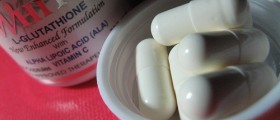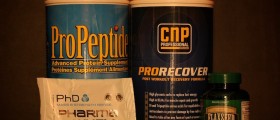
Information on Glutathione Cream
Glutathione cream is a substance mainly used for the whitening of the skin. It is very popular because of its immensely strong antioxidant properties. In chemical terms, it is a tripeptide which actually represents three different types of essential amino acids linked together. Those three essential fatty acids are glutamic, glycine and cysteine. Glutathione can be oxidized (also known as dimmer) and reduced (sometimes referred to as monomer). Oxidized glutathione require reductase enzymes in order to become active, which is not the case with its reduced counterpart. Glutathione is very efficient when it comes to the protection, maintenance, rejuvenation and detoxification of all the body cells. It is an important ingredient in various different types of cosmetics products.
Glutathione Cream Benefits
More than 90 percent of all healthy cell tissues are made up from reduced glutathione. It is actually an endogenous type of antioxidants and it occurs naturally in the human body. It can come in very handy when it comes to fighting the free radicals and various other sorts of reactive oxygen compounds which also may be harmful. Glutathione is also very efficient in activating other types of nutrients such as vitamin E or vitamin C. It prevents the cancer by detoxifying certain potentially harmful substances in the human body. Other important processes inside the human body which utilize glutathione include amino acid transport, protein synthesis, metabolism and DNA synthesis. Glutathione deficiency is a medical condition which often gets associated with other severe medical conditions such as autism, rheumatoid arthritis, Parkinson’s disease, AIDS and HIV. Glutathione is very efficient when it comes to reduction of skin blemishes triggered by oxidative stress. By detoxifying the entire body, it also clears the skin.
Glutathione Cream Side Effects
Glutathione cream is very beneficial for numerous purposes within the human body but it can also be associated with the occurrence of certain types of side effects. Most of them are usually not that severe and they are commonly affiliated with excessive usage of the product. Creams commonly contain contaminants, additives and fillers so that is why pregnant and breastfeeding women should avoid using glutathione cream. Glutathione cream can also be involved with several kinds of allergic reactions in some cases. Glutathione cream side effects include ochronosis, skin inflammations, itching and hives. Natural sources of glutathione include asparagus, meat, broccoli, spinach, cabbage, strawberries, grapefruit, tomato, orange, potato, parsley, watermelon and spinach.

















Your thoughts on this
Loading...